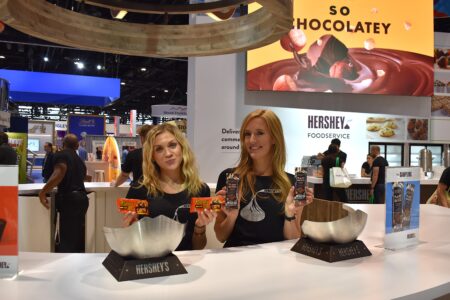Cocoa Liquor market for chocolate forecast for global growth to $7 billion within a decade

The cocoa liquor market, used widely by major firms for chocolate making including Barry Callebaut, is showing sustained growth. Pic: Barry Callebaut
Latest research has shown that the cocoa liquor market for chocolate making is forecast for notable growth of around 6%, to a value of around $7 billion by 2033, according to studies from Future Market Insights, writes Neill Barston.
As the group’s analysis found, the market is set to rise in-line with expected wider expansion of the confectionery sector, which is continuing its growth trajectory in spite of wider supply chain challenges.
According to Future Market Insights, even in emerging economies, deep penetration of cocoa-infused confectioneries is feeding the sector’s growth, as consumers seek out a greater variety of tastes within the category, with chocolate retaining its popularity on a global basis.
Notably, the company’s studies found the market is back by demand for specialty or artisan chocolates. These premium chocolates are mostly used for gifting purposes. Low-calorie dark chocolate is also gaining widespread prominence across the globe, as reflected by the uptake of cocoa liquor-infused goods. To meet the high demand for chocolates, the production of cocoa liquor is increasing. Manufacturers are investing and building their units in different geographies to spread their operations wide.
As Confectionery Production has previously reported, major brands including Ferrero, Barry Callebaut and Cargill have made significant investments in expanding their operations on an international level in recent years, which shows no pace of slowing.
Significantly, the latest sector report noted that many major players in the sector are increasingly focused on placing sustainable sourcing at the top of their agendas, in response to an increasingly savvy consumer market that is aware of environmental issues relating to deforestation, as well as human rights challenges of child labour that are linked to the industry in its cocoa supply chains in West African in particular.
Among the key findings of the industry study were that the US holds the dominant status in the cocoa liquor industry globally. In 2022, the market held 21.8% value share, closely followed by Germany, which acquired a 20% market share last year.
Furthermore, the study noted that the Japanese cocoa liquor market gained a 3.5% value share, and the Australia cocoa liquor industry gained a 2.1% value share. From 2023 to 2033, India is expected to proceed with a 7.6% CAGR, while the Chinese cocoa liquor industry is projected to expand at a CAGR of 6.7%, with UK close behind on around 6% expected growth.
Significantly, the study found that Dutch cocoa liquor assumed a market share of 57% in 2022, and on cocoa variety, the forastero segment gained a maximum market share of 80% in 2022, with wafers accounting for 41% of the sector, and chocolate confectionery around 35% based on market applications in the past year.
The study noted: “Rising global demand for premium chocolate signifies a growing niche market, prompting industry leaders like Mars and Ferrero to diversify offerings with cocoa liquor integration, a strategic move capturing the evolving consumer preferences.”




A recent report from Future Market Insights (FMI) predicts that the global cocoa liquor market will grow to a value of $7 billion by 2033, representing a CAGR of 6%. This growth is being driven by a number of factors, including:
Increasing demand for premium dark chocolate products
Growing popularity of artisanal chocolate products
Expanding the use of cocoa liquor in cosmetics and pharmaceuticals
I really appreciate the insights you provided in your blog. Thank you for sharing this valuable information.